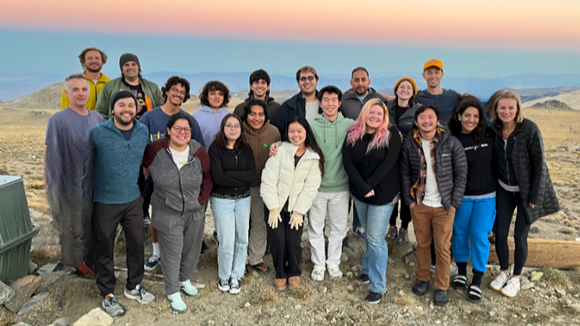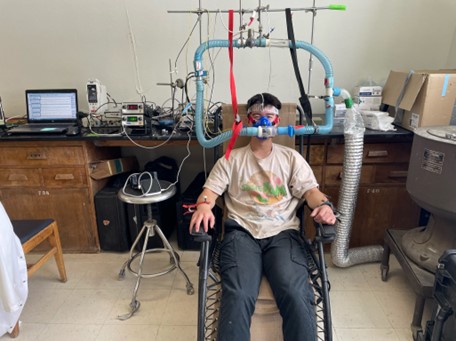
Testing the effect of a probiotic SLAB51 on acclimatization to high altitude at Barcroft Station
by James Yu, UC San Diego, 2023 WMRC Mini Grant Recipient
This past summer, researchers from University of California, San Diego (Simonson Lab and Malhotra Lab) and University of California, Riverside (Heinrich Lab and Seitz Lab) conduced a preliminary clinical trial to test the efficacy of the probiotic SLAB51 (O2booster; Hecto, Seoul, South Korea) on acclimatization to high altitude. This probiotic had shown promising results from previous studies exploring its effect on oxygen saturation during exercise in simulated high altitude in a hypobaric chamber and oxygenation in prematurely born babies. Thus, we proposed to conduct a double-blinded, placebo controlled, cross-over study, where study participants would ascend and stay at high altitude for four days while either ingesting the probiotic or a placebo, with another ascent to high altitude at least four weeks later, taking the opposite treatment the next visit. White Mountain Research Center’s Barcroft Station was the perfect place to conduct this experiment due to its spacious laboratory, wonderful food and staff, and plenty of bedspace–all within the beautiful backdrop of the White Mountains and Sierras.

Alas, the best-laid plans of fieldwork scientists often go awry, and our study was no exception. Our first trip was cut short due to Hurricane Hilary, the first hurricane to hit Southern California in decades, and a group of that first trip had to be rescheduled, ultimately resulting in scheduling conflicts for many participants. However, through scientific perseverance and wonderful flexibility of the research participants, we were able to attain a plethora of scientific measurements over multiple trips. These included oxygen saturation, resting heart rate, blood pressure, Acute Mountain Sickness score, cognitive tests, heart rate variability, sleep studies, flow-mediated vasodilation, ventilatory measurements, and exercise studies. These measurements were complemented by a variety of biospecimen collection, including blood, saliva, and fecal samples. While the research teams are currently poring through the mountains of data, we are seeing evidence that ingestion of this probiotic may improve oxygen saturation, ultimately aiding acclimatization to high altitude. Very few aids to high-altitude acclimatization exist, and we are extremely excited about the possibility of SLAB51 being added to the toolkit that those ascending to the highest elevations have access to!
None of this research would have been possible without the existence of facilities such as Barcroft Station and the staff that run White Mountain Research Center. High-altitude researchers such as ourselves are extremely fortunate to have such a precious resource, and awards such as the White Mountain Mini-Grant help support young scientists like myself progress in our dissertations. This study will be a big portion of my dissertation, and I will certainly be back at Barcroft Station!